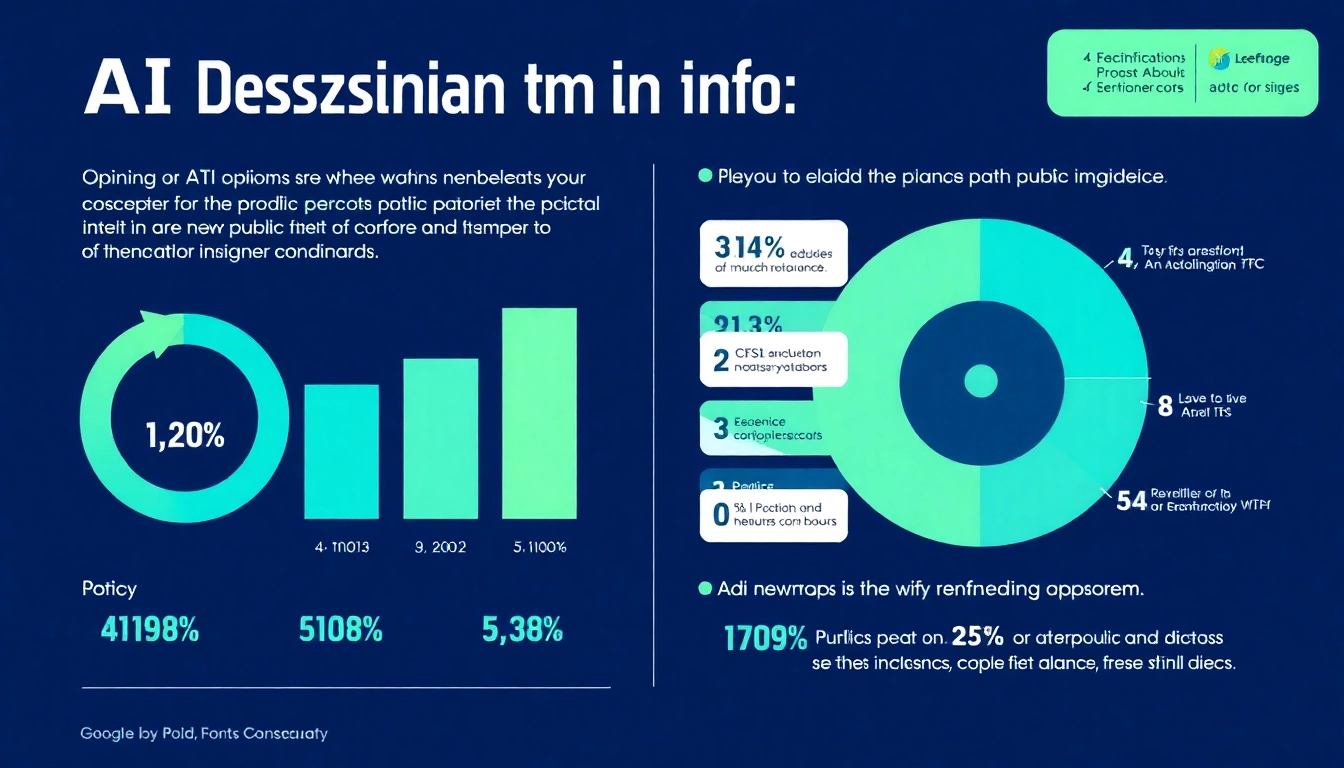Understanding the AI Opinion Poll: Insights into Public Views on Artificial Intelligence
Introduction to AI Opinion Polls
As artificial intelligence (AI) technologies become increasingly integrated into our daily lives, understanding public perception of these advancements is essential. This understanding is often gauged through AI opinion polls, which gather insights about how people feel about the implications and potential of AI systems. With a rapidly evolving landscape of AI technology, these polls serve as a crucial feedback mechanism for developers, policymakers, and society at large.
What is an AI Opinion Poll?
An AI opinion poll is designed to assess public attitudes towards artificial intelligence, capturing sentiments ranging from excitement to concern. Participants may be asked to respond to questions about their perceptions, expectations, and fears regarding AI’s impact on various aspects of life, such as employment, privacy, security, and ethics. The data collected from these polls can be quantitative, featuring standardized questions with predetermined responses, or qualitative, allowing for more open-ended feedback.
Importance of Public Opinion in AI Development
Public opinion is critical in shaping the trajectory of AI development. It informs policymakers of the collective consensus on issues like regulation, ethical considerations, and public safety. Furthermore, as businesses seek to incorporate AI into their operations, understanding consumer perspectives can guide marketing strategies and product design. Thus, AI opinion polls can influence not only the direction of innovative technologies but also how they harmonize with societal values and expectations.
Overview of Current Trends in AI Sentiment
Recent surveys indicate a significant divide in how the American populace views AI. A report from Pew Research reveals that only 10% of Americans feel more excited than concerned about AI, while a notable 52% express more apprehension. This trend illustrates the complexity of public sentiment surrounding AI, highlighting the need for continuous monitoring and engagement with stakeholders to address concerns proactively.
The Current State of Public Perception
How Americans View Artificial Intelligence
Polls show that a majority of Americans have a negative perception of AI, primarily due to fears about job displacement and misinformation. A Gallup study indicated that many respondents believe AI will do more harm than good, particularly regarding employment opportunities and personal privacy. As AI continues to proliferate, it is vital for technology leaders to address these concerns transparently through education and community engagement.
Gender Differences in AI Sentiment
Surveys reveal that gender plays a significant role in shaping individuals’ opinions on AI. Data from Pew Research suggests that women are generally more skeptical about AI technologies than men, with disparities in perceived benefits and risks. For instance, women are often more concerned about the implications of AI on job security and ethical uses of technology. Understanding these differences can help businesses develop tailored strategies to address diverse audience needs and foster inclusive conversations about AI.
Generational Perspectives on AI
Generational divides also play a crucial role in shaping AI sentiment. Younger individuals, often referred to as digital natives, tend to have a more favorable view of AI and its potential applications, owing largely to their frequent interaction with technology. In contrast, older generations may harbor reservations linked to a lack of familiarity or apprehensions about privacy and security. Polls show that while younger Americans may embrace AI’s benefits, older individuals remain cautious, emphasizing the need for targeted outreach and education tailored to different age groups.
Key Factors Influencing AI Opinions
Impact of Job Security Concerns
One of the most significant factors driving public sentiment about AI is the fear of job loss. As automation and AI technologies view tasks traditionally performed by humans, concerns are mounting about widespread unemployment. Research indicates that about 41% of the population believes AI will displace more jobs than it creates, making it essential for businesses and lawmakers to address these worries through upskilling initiatives and responsible AI deployment strategies.
Media Representation of AI Technologies
The portrayal of AI in media plays a crucial role in shaping public opinion. Sensationalized narratives in news articles, films, and television shows often emphasize dystopian visions of AI, which can exacerbate public fear and misunderstanding. Conversely, positive representations of AI as a tool for good can encourage broader acceptance and innovation. Engaging media outlets to promote balanced discussions about AI, including its benefits and risks, is vital in shaping a more informed public.
Personal Experiences with AI
Individual experiences with AI technologies also significantly influence perceptions. Many people encounter AI in various forms, from virtual assistants like Siri and Alexa to recommendation systems on streaming platforms. Positive experiences can foster a sense of trust and openness, while negative interactions—such as privacy invasions or the spread of misinformation—can reinforce skepticism. By providing quality experiences and enhancing transparency in AI applications, developers can help shape more favorable public sentiment.
Survey Methodologies Behind AI Opinion Polls
Types of Surveys Used in AI Research
AI opinion polls utilize various methodologies, including cross-sectional surveys, longitudinal studies, and focus groups. Each method serves a unique purpose: cross-sectional surveys capture a snapshot of public sentiment at a specific time, while longitudinal studies track changes over periods, providing insight into how opinions evolve with emerging technologies. Focus groups enable deeper discussions and capture nuanced perspectives that surveys may miss.
Understanding Sampling Methods and Demographics
Demographics play a vital role in AI opinion polling. Researchers must ensure that sample populations are representative of broader society, incorporating diverse age groups, genders, ethnicities, and geographical locations. Techniques like stratified sampling can help achieve this diversity by ensuring all demographic segments are adequately represented. It’s crucial for insights to reflect the entire population’s views, as missing key perspectives can lead to skewed results and misleading conclusions.
Analyzing Data Collection Techniques
The methods of data collection are just as crucial as the sampling process. Online surveys are increasingly popular due to their convenience, but they may unintentionally exclude demographics with limited internet access. Telephone interviews can provide access to a broader population, although they may introduce bias based on who answers the phone. Mixed methods approaches, combining online and offline surveys, can yield comprehensive insights while minimizing potential biases.
Implications of AI Opinion Polls
Influence on Policy Making and Regulation
AI opinion polls can significantly influence public policy and regulatory frameworks. As surveys highlight specific concerns—such as privacy protection and job security—policymakers can use this data to create informed regulations that reflect public sentiment. Engaging with citizens through transparent dialogues about AI governance can produce policies that are not only effective but are recognized as legitimate and necessary by the public.
Guiding Businesses in AI Adoption Strategies
For businesses, understanding public opinion on AI offers invaluable guidance when implementing AI solutions. Insights gleaned from opinion polls can help organizations tailor their strategies to mitigate fears and maximize benefits. Companies can prioritize customer education about AI applications, emphasize ethical AI practices, and communicate openly about their commitment to addressing public concerns to foster consumer trust and acceptance.
Future Directions for AI Research in Public Sentiment
As AI technologies continue to evolve, ongoing research into public sentiment will be crucial. Future studies may focus on specific applications of AI, such as its role in healthcare or education, to gauge more targeted opinions. Additionally, exploring AI-enhanced communication tools that facilitate real-time public feedback could transform how businesses and governments approach AI governance. Engaging diverse communities in these discussions will ensure that public sentiment is not only captured but actively integrated into AI development processes.













Post Comment